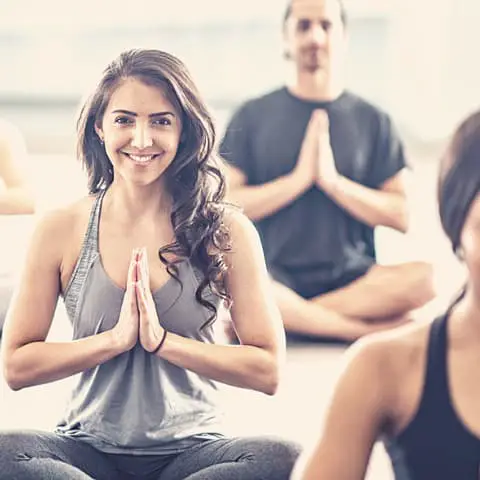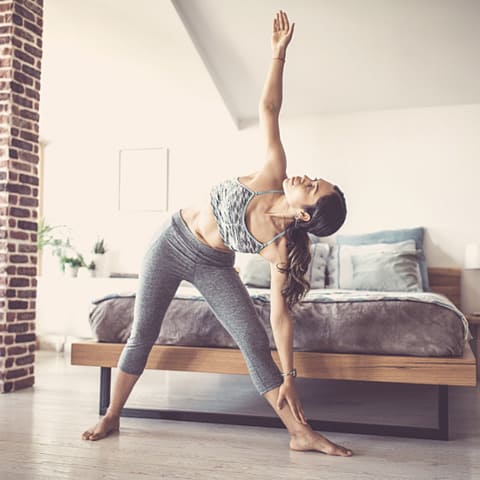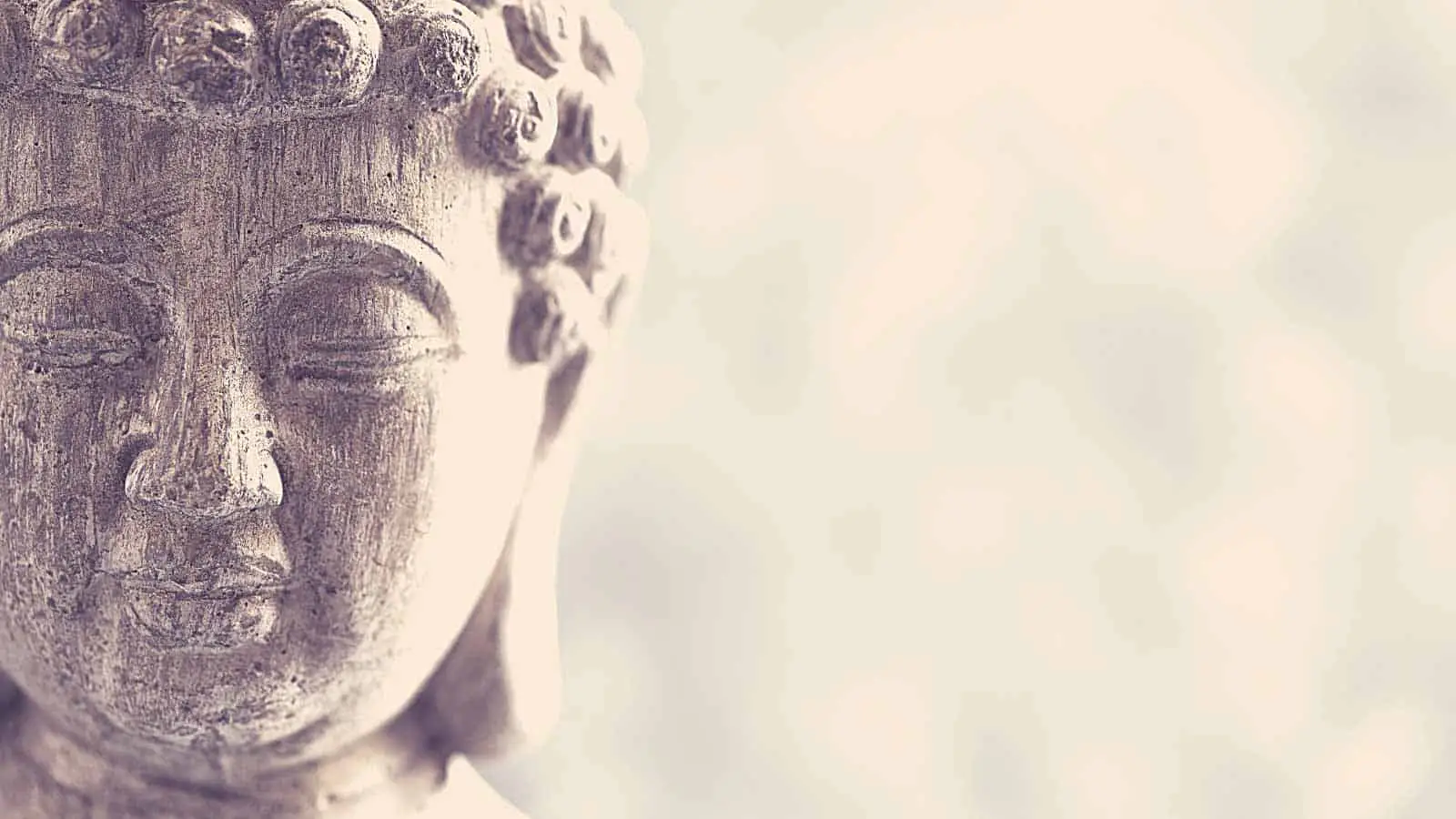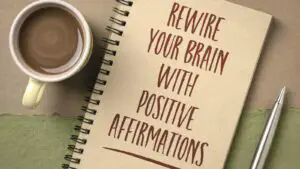Meditation is a simple yet powerful tool that can bring endless benefits to the mind and body when it is correctly implemented in our lives. While meditation schools and classes do exist, you can also practice on your own. And, if you have decided so, you might look for some extra guidance to get the most out of your mindfulness sessions.
Improving your meditation can take time and practice. Start with sticking to a session a day in the same location. Ensure you are comfortable and happy to embrace the feelings, emotions, and thoughts that might come around. Stay anchored to your breath, and always be grateful for your practice.
No two meditation practices are the same, no matter how long you have been meditating. Be kind to yourself and check out how you can make your next meditation session your best one yet below.
Meditate in the Morning
If you are still new to meditation, you might find it challenging to find the time and motivation to do a mediation session. Because of our lifestyle and culture, we are all used to being as active and busy as possible, which has brought us to find it unusual to take some time for ourselves.
Fighting this mind frame and allowing yourself to enjoy a meditation session a day can take time and patience – and it is not granted! It will require you to work towards building a healthy routine.
Because it can be hard to stick to it, you should choose to meditate in the morning. Something as simple as dedicating time to it first thing in the morning can help you set yourself up for the day.
Additionally, this strategy allows you to ensure that you can always fit in a short meditation session.
Create a Routine
Not everyone has the time or ability to meditate first thing in the morning. If this is not for you, just try to create a healthy routine in the best way you can. Start by committing to meditate at some point during your day.
This commitment allows you to start thinking of your meditation routine as part of your regular day. In turn, this can help you stick to it. If you live a hectic life and don’t know where to fit the practice, start by just setting aside no more than 15 minutes.
Indeed, it has been seen that even 10 minutes a day can bring you incredible benefits and can start to fight back stress and anxiety.
Create a Meditation Corner
Creating a meditation corner that is inviting and perfect for relaxation can help stick to your routine and improve your practice quality. This dedicated place might encourage you to enjoy your practice more and make you think of it as the place where you go to meditate.
When creating such a special place, ensure that it is clean and uncluttered. These aspects are important because they can help your brain relax and focus on your breathing – which, in turn, will improve your meditation.
Your meditation coroner should be a place where you feel entirely comfortable and at ease. However, it should also be a healthy location of your home, whether you prefer it to be darker or brighter.
Some tips for the best meditation nook include:
- Add plants
- Pick a spot by a window
- Make it comfortable with pillows and blankets
- Ensure that the temperature is easy to regulate
- Make it a phone-free zone
Remember That Everyone Can Meditate

If you have just approached your first meditation sessions, the whole process can seem overwhelming and intimidating. While this is normal, it can harm your mindset and even cause you to give up on meditation altogether.
Moments of low motivation can happen. However, there is always something you can do to return to your routine.
One of the best strategies to use is the 100 breath technique. This meditation technique has been developed to fit the needs of our daily busy lives perfectly. Everything you will have to do is go back to your meditation nook – or any quiet place, close your eyes, and count to 100 breaths.
This strategy is an excellent way to keep up with your meditation goals if you lose motivation or you feel like there is no time in your day to dedicate to meditation. After all, everybody has time for 100 breaths!
Don’t Wait for the Ideal Place to Meditate
As we have seen above, creating a personalized, clean, and inspiring meditation nook can truly help you work towards a meditation routine that works for you. However, sometimes you might just not be able to go back to your meditation corner. It might be because of business trips or because you are spending time somewhere else.
While it is positive for your meditation routine to happen in the same location every day, don’t use the fact that you can’t go back to it as an excuse. Indeed, you can do meditation everywhere and at any point during the day.
You can count to 100 breaths in the morning, evening, or when during your commute. You might just want to ensure that you are in a relatively quiet place and you won’t be disturbed.
Find a Comfortable Position (Not Just Cross-Legged!)
When thinking about meditation, the first image that comes to mind is a person sitting cross-legged and immersed in peaceful natural surroundings. However, because of our lives and culture, our daily meditation might look something completely different.
Firstly, you might not be in natural surroundings at all. Instead, you might be on a train going to work or in a taxi. Additionally, you don’t necessarily need to sit cross-legged.
Indeed, this position might be extremely uncomfortable for most people, especially when you need to hold it for several minutes at a time. Aside from the fact that you might find this position uncomfortable, it can also be extremely distracting for your practice.
Instead, opt for alternative solutions. Among the most common positions for meditating, you will find:
- Sitting in a chair or couch, keeping arms and legs uncrossed and relaxed
- Kneeling position
- Lying down position or Savasana
- Standing
Most people will find themselves most comfortable in the first position, especially when sitting with the feet flat on the floor or carpet, hands on knees, and a rolled-up blanket behind the lower back to remain straight.
However, don’t forget that you can also enjoy meditation while walking or running.
Don’t Force Your Breathing
The relationship between mindfulness, meditation, and our breath is more profound than we often realize. We know that taking long, deep breaths can help us relax in moments of stress or panic. However, you can also gain better control over your mind when understanding your breath.
Nonetheless, during your meditation practice, you should not strive towards controlling or modifying your breathing.
Instead, you should just observe it and the effect it has on your body and how it causes a rising and falling feeling in your body. When your mind starts to wander, you can use the breathing to come back to your meditation.
Embrace Some Discomfort
As we have seen above, you should make yourself as comfortable as possible during your meditation practice. However, you are likely to find some discomfort during the time you spend focusing on your breath.
You might feel discomfort physically because you are not sitting in a comfortable position. In this case, you might decide to observe the body, noticing any itches and pain you might feel.
However, in most cases, you might feel other types of discomfort. Indeed, it is possible for meditation sessions just to bring some emotions afloat. These might be feelings of fear, anxiety, restfulness, or irritation.
Don’t try to avoid these emotions. Instead, embrace them, recognize them, and try to understand what has caused them. This exercise can also be extremely beneficial during your everyday life when you analyze your emotions without getting caught in them.
Find a Meditation Buddy

Meditation does not have to be a solitary practice. Of course, it is all about yourself, but you can ask your loved one to join you. Even if you are not meditating at the same time, it can be an excellent way to motivate each other to practice and start building positive routines.
Alternatively, you might decide to just practice with someone next to you. You can enjoy your meditation practice with your little ones, partner, or even pet.
Note the Benefits of Meditating
Sometimes, our practice is influenced by our misconceptions and mood. It is possible to just wake up without the motivation necessary to spend time with yourself. However, that time might exactly be the medicine needed.
In this case, you can obtain excellent results just by reminding yourselves of the benefits of meditation. You could think of the ones that have been proved and tested. Or, even better, you can think about the advantages and changes you have experienced since you have started meditating.
It can be something as small as getting to know yourself better, embracing an emotion, or letting something that no longer serves you go. Reminding yourself of the results you have experienced might be all you need to get back to your meditation corner and start practicing!
Check-In With Your Body
Once your meditation practice is over, don’t jump directly into your daily chores. Or, don’t do so without recognizing the benefits that your session has brought into your body. When practicing yoga, this moment might be represented by the final corpse pose or savasana.
When meditating, checking in with your body can yield the same incredible benefits. During this moment, you take time to notice how you feel and what has changed since you have started your session. You might bring your attention to your feelings, emotions, mind frame, or body.
Refrain From Judging Your Session
Improving your meditation is something that takes time and practice. However, sometimes, you are already doing great! After your meditation practice, don’t spend time analyzing what has been going on during the time spent with your eyes closed. Instead, just observe your body and refrain from labeling your meditation practice with a simple attribute.
Ultimately, a meditation session can be considered extremely successful if you have just changed something in your body or mind during meditation.
Start With a Brief Practice

It is impossible to identify the price duration of the perfect meditation session. Indeed, this will depend on how long you wish to meditate, your schedule, your mind frame, and even your focus. Not every day is the same, and, sometimes, you might just feel like you don’t want to spend a long time meditating.
And, that’s okay! As seen above, it has been seen that the beneficial effects of meditations are visible with just a short practice of 10 to 15 minutes a day. If you are just starting, you might even consider briefer sessions of one to five minutes.
Once you become comfortable meditating for a minute, you can start increasing this time frame, exploring the practice further, and understanding your mind better.
When starting to meditate, remember that the real benefits appear thanks to consistency, not length. So, it is recommendable to start small and increase your meditation sessions’ duration once you get comfortable with them.
Eat Mindfully
If you have just enjoyed a full, heavier meal, enjoy it! However, it might be recommendable to move your meditation practice to some time later. That is because your body will be working towards digesting the food ingested and might not offer you the energy and clarity you need to enjoy your meditation practice at its best.
Instead, if you plan to meditate, you might consider light, plant-based meals made of fresh produce. For example, a fruit salad or a salad might help you control your hunger without feeling too full or bloated.
Alternatively, you can opt to fast altogether until after the meditation session.
Take a Minute to Calm Your Mind Before Starting
It can be extremely challenging to go from our hectic lives to our minds and bodies’ calm environment. If you have just finished a hard day at work or feel the pressure deriving from your daily chores, it is recommendable to take a minute before immersing yourself in your meditation practice.
Just taking a few cycles of breath before your meditation session can help you relax your body and mind and be better prepared for the meditation ahead. This breathing exercise can help you fight back stress and anxiety, making more space for calm and control.
After the breathing exercise, you are likely to feel safer and calmer, a great starting point for successful meditation.
Bring Mindfulness With You
Once your meditation session is over, don’t leave all the benefits it yielded behind you. Instead, ensure you are bringing all these benefits into your day ahead. You can do so by forming in your mind a clear idea of what your day will be like after closing your meditation.
This visualization exercise can be a great starting point to keep mindfulness with you throughout the day. In turn, this can help you live in a more relaxed and compassionate way – which will translate into a more profound and successful meditation practice.
Make It Natural
Even if you have learned to meditate in a certain way or have found a specific course, make sure your meditation practice fits your preferences. It should feel natural and not forced and, while there are several types of meditation you could benefit from, not all of them can be suitable for your needs.
Make sure you are taking time to explore the different options, but don’t be afraid to make yours one that works for you.
Always Come Back to Your Breath
If you have just started to practice meditation, it is natural to witness your mind wandering off. That is when you start thinking of a memory, a fact, or something that you will need to do. While these might all be important points to go back to later, they should not have space during your meditation practice.
At the same time, it is understandable for your mind to wander, and it will happen regularly. When it does happen, acknowledge it and return to your breath. You should not be harsh on yourself because of this—instead, smile and focus on your breathing.
If you have been counting your breaths, don’t be afraid to start over!
It Might Not Always Be About Clearing the Mind
Some types of meditation might purely be about clearing the mind. However, your meditation practice does not always have to be about blocking out all thoughts. Instead, you can start working towards embracing these thoughts,
Once you become more comfortable in your meditation practice, your mind may be clear. However, this does not have to be the end goal of all meditation sessions. Your mind is bound to wander and form endless thoughts and emotions. These are normal, but you should strive towards re-focusing on your breathing.
Merge It With Your Yoga Practice

Yoga and meditations are two different practices, but they are complementary to one another. Mindfulness meditation might help you keep stress and anxiety at bay while offering you the chance to look more deeply into yourself.
Yoga allows you to start understanding your body much better than you did before. Like in the case of meditation, one of yoga’s principles is to move with the breath. If you are looking at improving your meditation, some yoga sessions can increase your focus and better understand your feelings.
Embrace What You Feel During Meditation
Meditation is a powerful practice that will cause you to think – if nothing else. The silence and emotions might feel overwhelming at first. However, you should not try to get rid of them. Instead, you can decide to stay with your emotions and feelings for a bit, understanding them before deciding whether they still serve you or not.
Not All Meditations Sessions Are the Same
Just like any other discipline or activity, the more you practice meditation, the better you will become at it. However, it is crucial to keep in mind that no two sessions are the same. Therefore, you might feel like you have made progress until a not-so-fruitful session comes along.
In these cases, you should understand that you have not lost any of the progress made. However, you might have gone into meditation during an off day. In this case, a more extended meditation session can only help!
Conduct a Body Scan
A body scan is one of the best-guided meditations that can help you tune in with your body and mind. You can practice a body scan while sitting or lying in Savasana. This practice consists of following your breath and following one part of the body at a time.
Usually, you can start from your toes, working your way towards the crown of the head. Body scans are particularly suitable when you begin a meditation practice in an unusual or unfamiliar place. Indeed, this practice allows you to focus on your breath and tune in with the body.
Don’t Escape From Where You Are – Embrace It!
As we have seen above, the best way to meditate is a perfect nook in your home where you can practice every day. While this is the best place for your meditation, it is not one that is always available. Indeed, sometimes you might be in an unfamiliar room or noisier environment.
Independently on where you are, it is crucial to embrace the external environment. Indeed, finding a sound-proof room that has all you need is almost impossible. You will have to notice and embrace the light, sounds, or even the smells in a room in most cases.
If you are making the room with all these interferences part of your meditation nook, you should work towards making them yours and part of the meditation itself.
Commit to a Healthy Routine
Your mindfulness practice does not start or end when you sit down to meditate. Instead, it should be a mind-frame that you carry with you throughout your day. If you do, you will notice that you will start paying better attention to your body’s health.
In turn, this kind of mindfulness will encourage you to eat in a more nourishing way, exercise, and build healthy and rewarding relationships. These are only some of the aspects that make up a healthy routine.
Guided Meditation Is a Great Way to Start
Meditation can feel like an overwhelming practice, especially if you wish to start practicing on your own. However, if you are unsure about what to do and need a little more guidance, you might try a guided meditation.
Guided meditation sessions are often led by experts who understand how the body reacts to certain stimuli. You can just follow the instructions given to you and stop wondering what to do next!
Be Grateful to Yourself for Your Commitment
Not all meditation sessions will come so easy to you. Some will feel more natural than others. However, consistency and persistence are at the core of improvement and development. So, if you want to see results in your meditation and daily life, commitment is crucial.
Simultaneously, committing to something so big can be a great act of love towards yourself. When showing up for your meditation session, thank yourself for having made it this far, and remember no to judge your meditation session!
Introduce Movement Slowly After Meditating
The last moment of each of your meditation sessions is just as important as the first ones. During these final moments, you have the chance to check in with your body and start visualizing the great day ahead.
So, whether your session has lasted a few minutes or much longer, it is crucial to spend a few minutes exiting your session in the best way. You can do this by starting to wake up your toes and fingers, moving them towards your hands and feet.
Slowly, you can regain control over your whole body. However, this can take a while, and you should enjoy the process of ending your meditation session. After all, you want to bring that mindfulness into your daily life – so take your time to visualize how!
Find the Type of Meditation for You
Lastly, if you genuinely don’t feel comfortable meditating at the moment, maybe you just have not found a type of meditation that works best for you. There are over 12 types of meditation you can try. Some of these involve chanting, while others focus on breathing and sounds.
While they all yield similar benefits, they might not all be suited in the same way for the same practitioners. To truly enjoy meditation, it is crucial to find what feels goods and works for your needs.
Conclusion
Each meditation session is unique and will bring afloat unusual thoughts, feelings, and emotions. Because of your mindset, when you approach meditation, you might experience better and worse sessions. However, this does not mean that you are not progressing, and you should always be grateful to yourself for having shown up. To improve your practice, stay anchored to your breath and return to it if your mind wanders. Ensure you are comfortable and leverage guided meditation if you need a little extra guidance during your next session. Take your time when meditating!








